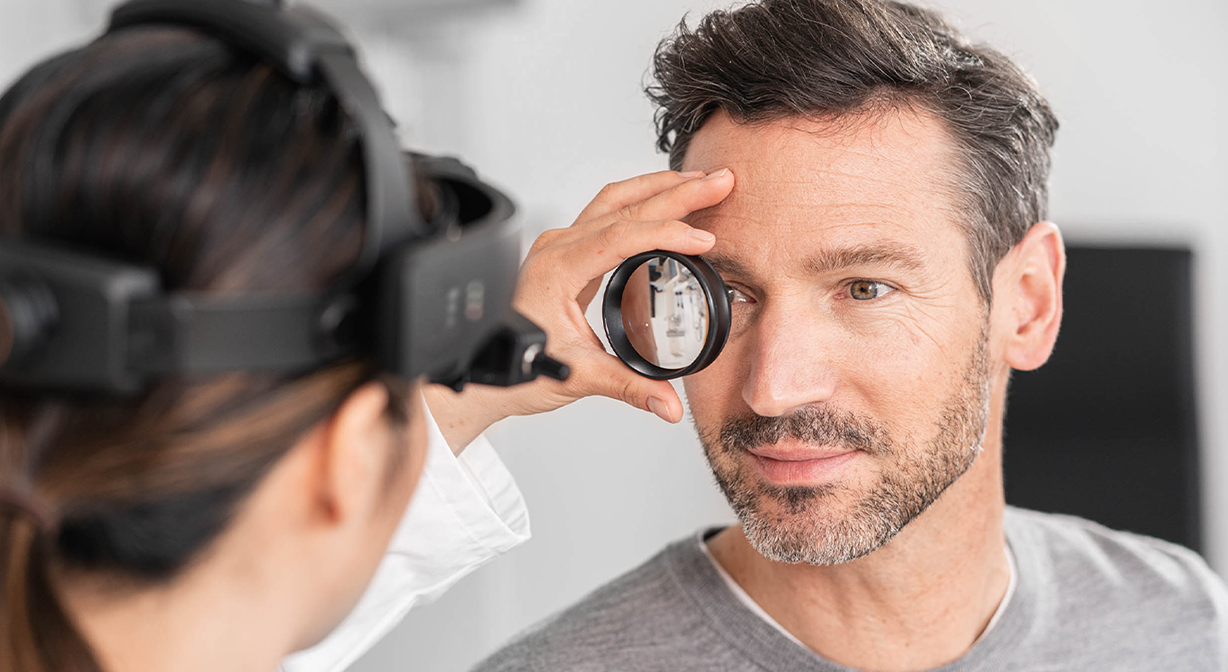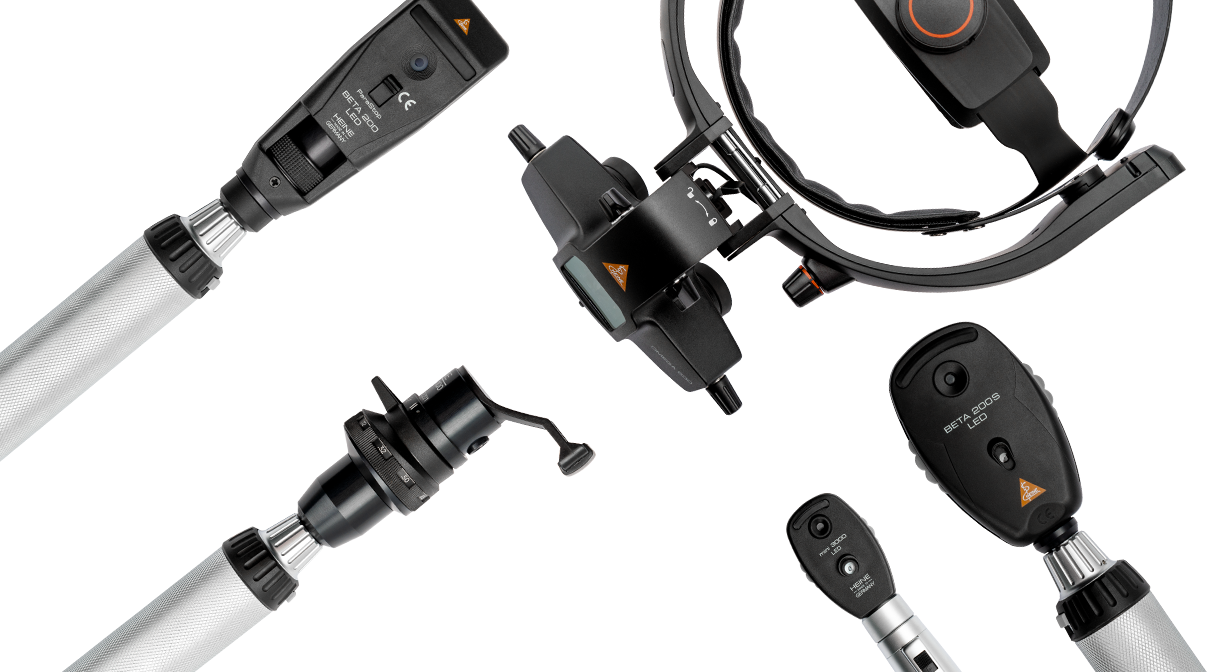Ophthalmology
Ophthalmology is one of the oldest medical sub-disciplines. References about the treatment of eye diseases can be found on stone slabs as old as 3600 years. Details about the structure of the eye, however, have only become known and used systematically since the introduction of the microscope in the 19th century.
Today, the choice between numerous ophthalmological instruments allows doctors to diagnose and treat eye diseases and functional disorders.
HEINE is specialised in the development and production of ophthalmological diagnostic instruments. Whether it be head-worn or hand-held, the entire HEINE product portfolio stands for the highest quality in order to provide the earliest and most precise diagnosis.
Our instruments are used worldwide by eye specialists, optometrists, orthoptists and students, as well as by general practitioners, paediatricians and veterinarians.
Ophthalmoscopy
Ophthalmoscopy is an examination of the fundus of the eye. It is performed with the help of an ophthalmoscope that illuminates the retina through the pupil. Thus, the doctor can check the retina, optic disc and the blood vessels supplying them.
There are basically two different approaches you can take when it comes to ophthalmoscopy:
| Direct ophthalmoscopy | Indirect ophthalmoscopy | |
| Sterovision? | no | yes |
| Field of View ° | ~ 10° | ~ 36-69° |
| Magnification | x 15 | x 2-5 |
| Image | erect + real | inverted + virtual |
| View in hazy media | poor | better |
| Working distance | very close | comfortable |
| Drawings of retina | difficult | much easier |
Direct ophthalmoscopes require that the eye of both the examiner and patient are in close proximity, being about 10 cm away from one another.
Indirect ophthalmoscopes are used at a distance of about 50 cm, with a light source in addition to an ophthalmic lens held in front of the patient’s eye.
With the binocular indirect ophthalmoscope (BIO), you get a wider field of view, allowing the whole retina to be explored, including the far periphery.
Both can be used with dilated or undilated pupils, which can be of advantage with children. Premature baby retinopathy (ROP), scarring on the periphery, retinal detachment or media opacities can be easily examined.


